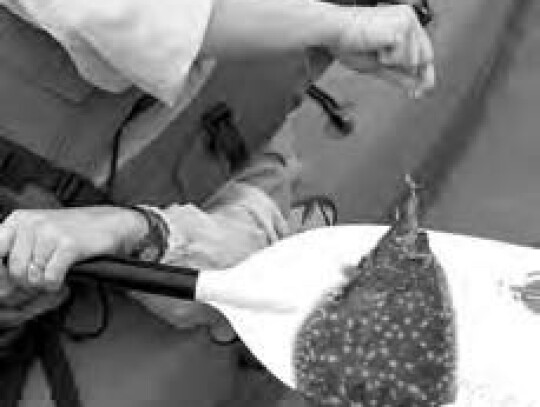My first seafood was a stuffed crab at Hill’s on the Galveston seawall in the 1940s. Later, summering at my grandmother’s home on the river west of Seguin, we had Sunday dinner at the Aumont Hotel. I ordered fried Gulf trout every time. I don’t know whether they were speckled trout, sand trout, or gafftop catfish -- I loved every bite!
Thirty years later, I ate my first flounder. It quickly became my favorite. One of my best meals of ALLTIME was the night the late Jim Shipwash cooked crab-stuffed flounder. That was almost too much candy for a dime!
But even though the flounder daily and possession limits are five at least fifteen-inches long -- and as much as I crave that flat fish with both its eyes on the same side of its head -- I won’t be able to catch any between November 1 and December 14. The season is temporarily closed during that time.
And WHY? Well, it’s a conservation necessity. I could have guessed why, but I asked TPWD for information since I’d rather give you an authoritative answer than just my opinion. Coastal Fisheries Director Robin Riechers referred me to Dakus Geeslin, Coastal Fisheries’ deputy director.
Geeslin reminded me that the latest changes in flounder regulations occurred in 2020. They were designed to address long term declines in flounder populations. They changed the minimum size limit from fourteen inches to fifteen inches. They also closed the flounder season for the month and a half mentioned above.
The timing of the pause in flounder fishing was not just an arbitrary decision. In late fall, flounders leave the bays in large schools and migrate to the Gulf to spawn. Closing the season during that time enables more breeder fish to successfully make it to the spawning waters Catching a flounder has become a rare event due to a decline in flounder populations. TPWD keeps a close watch on this fine fish’s population. The latest conservation efforts include an upcoming moratorium on keeping flounders and an increase in the minimum size limit. See text.
Photo by John Jefferson
to make more baby flounders.
And adding another inch to the minimum length limit was done to protect more sexually mature fish onto the spawning area.
Flounders have been declining since the early 1980s, according to TPWD records. If room permits, the “Seasonal Bag Seine CPUE Southern Flounder” graph is attached and shows a steady decline, although there were wild ups and downs in flounder history. The dotted line shows the average. (CPUE stands for Catch Rate Per Unit Effort. That is the catch rate per hour in gill nets.) Two other data sets also support the overall decline.
Are the regulation changes adopted in 2020 helping? Geeslin says there have been minor increases in flounder recruitment in the upper coast (Sabine Lake and Galveston Bay). The Adult Flounder Catch Rate graph shows a slight decrease on the upper coast and modest increases in the middle and lower coast. It’s probably too early to evaluate success. More time and public cooperation are needed.
A friend from Minnesota recently did his part. Unfamiliar with Texas fish, he threw back a strange looking catch. He later told me it was weird: “It had both eyes on the same side.”
What a waste!
.jpg)



